The Big Trail Blu-ray Movie
HomeThe Big Trail Blu-ray Movie 
Blu-ray + DVD20th Century Fox | 1930 | 1 Movie, 2 Cuts | 122 min | Not rated | Nov 13, 2012
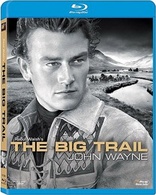
Movie rating
7.3 | / 10 |
Blu-ray rating
| Users | 4.4 | |
| Reviewer | 3.5 | |
| Overall | 3.5 |
Overview
The Big Trail (1930)
Pioneers heading for Oregon endure the hardships of weather, unfriendly strangers and internal strife in this sophisticated early sound film. Featuring John Wayne in his first starring role, this straightforward Western tale is now overshadowed by its place in history as an early example of Fox's widescreen Grandeur process, its naturalistic sound, and prototypical Wayne performance.
Starring: John Wayne, Marguerite Churchill, El Brendel, Tully Marshall, Tyrone Power Sr.Director: Raoul Walsh
| Western | Uncertain |
| Romance | Uncertain |
| Adventure | Uncertain |
Specifications
Video
Video codec: MPEG-4 AVC
Video resolution: 1080p
Aspect ratio: 2.10:1
Original aspect ratio: 2.00:1
Audio
English: DTS-HD Master Audio Mono (48kHz, 24-bit)
Subtitles
English SDH, French, Spanish
Discs
50GB Blu-ray Disc
Two-disc set (1 BD, 1 DVD)
DVD copy
Playback
Region free
Review
Rating summary
| Movie | 3.5 | |
| Video | 3.5 | |
| Audio | 2.5 | |
| Extras | 4.0 | |
| Overall | 3.5 |
The Big Trail Blu-ray Movie Review
Exploring the Widescreen Frontier
Reviewed by Michael Reuben May 10, 2012In 1930 American movie audiences were almost introduced to a brand new widescreen format that would have transformed the popular understanding of how movies looked, even while the public was still absorbing the notion of "talkies". The process known as "Fox Grandeur" used a 70mm frame and special cameras to show a 2.10:1 aspect ratio. If William Fox had succeeded in making it an industry standard, the history of both motion pictures and television might have unfolded very differently. Unfortunately for Fox and his studio, the Grandeur process required both new cameras and new projection equipment, which would have been an expensive proposition even if the country weren't already beginning its slide into the Great Depression. When Twentieth Century Fox staged what should have been the killer premiere of its first non-musical feature in the new format, The Big Trail, it could only manage to do so in two theaters, one in New York and one in Los Angeles. The rest of the country saw the film in the usual Academy ratio, which the film's director, Raoul Walsh, had shot simultaneously, using separate cameras. After The Big Trail, Fox gave up on Grandeur, and widescreen was essentially put on hold, until competition from TV prompted its resurrection 23 years later with Cinemascope and The Robe. But The Big Trail isn't just a chapter in the history of widescreen technology. It was also the first starring role for a young actor born Marion Morrison, who went by the nickname "Duke" and was given the screen name (the origin is still debated) of John Wayne. As the honorable scout, Breck Coleman, who helps lead a wagon train of pioneers across rugged territory to their new home, Wayne demonstrates why that rare and indefinable quality known as star power is so highly prized (and can't be taught). Despite being the newcomer among acting veterans, Wayne stands out among them and easily holds the center of a film that its ambitious director stuffed with extras, scenery, props and livestock. Everyone was still learning how to perform for talking pictures, and many couldn't shake the theatricality that had worked for them in silent films, but the future screen icon instinctively grasped that unadorned directness would always serve him best. It may have been the Duke's first starring role, but the essentials of his star persona are already on display.
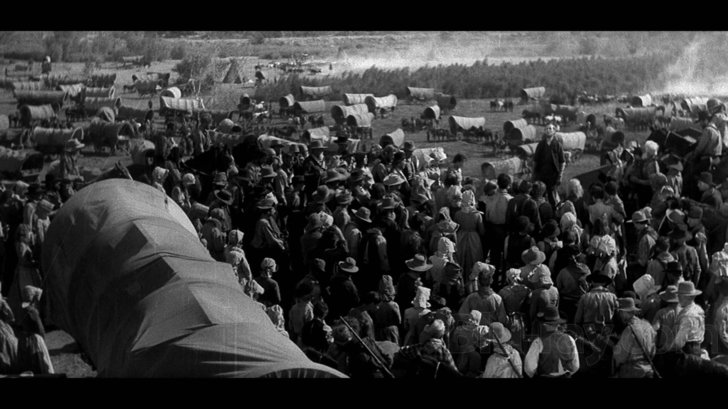
Note: The Grandeur and Academy ratio versions feature different takes, angles and running times and, accordingly, cannot be synched up for precise comparison.
The Big Trail is a square-jawed picture without a trace of irony or modern self-awareness. With one foot still in the silent era, it uses narrative intertitles whose intensely serious tone verges on self-parody. ("Ten weary miles a day. There is no road, but there is a will, and history cuts the way.") The story is simplicity itself: At some point in the late 1830s or early 1840s, a group of settlers sets off on the long journey from Missouri to the Pacific Northwest. A trapper and scout named Breck Coleman (Wayne) encounters this group at Wellmore's trading post, when he returns to Missouri from travels in New Mexico. Coleman has one thing on his mind: to find the killer(s) of an old friend, Ben Griswell, another trapper who was murdered and robbed of his haul of wolf pelts. When Coleman is asked to act as scout for the settlers, he intially declines, but changes his mind after learning that the wagon boss for the "bull train" they're following, Red Flack (Tyrone Power, Sr.), and his buddy Lopez (Charles Stevens) are almost certainly the killers Coleman has been seeking. He takes the job to confirm his suspicions and carry out frontier justice at the end of the trail. For their part, Flack and Lopez engage a gambler and con man, Thorpe (Ian Keith), to eliminate Coleman somewhere along the trail. Thorpe has little choice but to take the job, because he's been thrown off the steamboat on which he arrived for running the shell game con (the predecessor of three-card monte) and ordered out of town for similar misconduct. Romantic intrigue is supplied by Ruth Cameron (Marguerite Churchill), who is journeying west with her younger brother and sister. She and Coleman "meet cute" in a case of mistaken identity, when Ruth is visiting the home of the Riggs family, who Coleman has known for years and Coleman mistakes her for a family member and kisses her. He spends the entire trip to Oregon trying to apologize, and Ruth spends it refusing to accept his apology. She prefers Thorpe, whom she met on shipboard and knows how to affect fine manners while dropping references to his fictitious "plantation" in Louisiana. But every viewer knows that Coleman's true heart will eventually win the lady's favor. Comic relief is supposed to be supplied by Gus (El Brendel), a henpecked Swede with a battleaxe for a mother-in-law (Louise Carver), but his scenes barely rise to sitcom quality. (Maybe that's why there are fewer of them in the Academy ratio version of the film.) The real humor comes from Coleman's old friend Zeke (Tully Marshall), whose role seems to have expanded as filming progressed. As noted by critic and film historian Richard Schickel in the commentary, Zeke gets much more screen time than is justified by his relatively minor function in the story, but he and Coleman make an entertaining pair. Director Walsh knew good chemistry when he saw it. What The Big Trail provides most effectively is scale: massive movements of covered wagons across vast landscapes, perilous crossings over mountains and water, storms, deserts, negotiations with friendly Native Americans, an attack by hostile ones (I can't think of another film that portrays in real time the basic logistics of "circling the wagons"), and a stirring conclusion among giant redwoods. The film's epic ambition may have been an expensive disaster for Fox in 1930, but today it's what carries you past the rough spots in the script and keeps the experience watchable and compelling.
The Big Trail Blu-ray Movie, Video Quality 
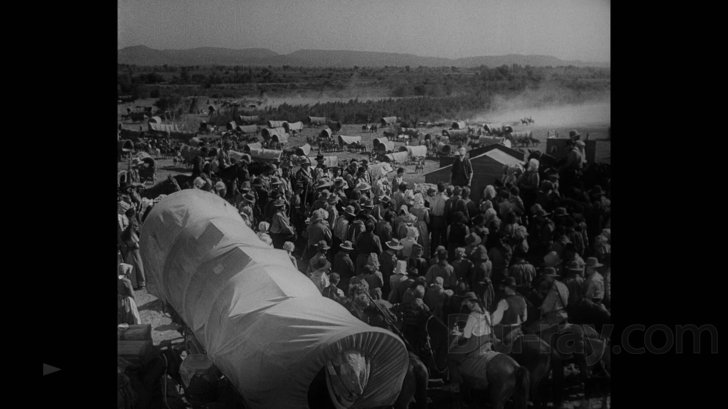
Fox previously released a two-disc DVD set of The Big Trail in 2008. This 1080p, AVC-encoded Blu-ray contains both the Grandeur version with an aspect ratio of 2.10:1 and the standard Academy version with a ratio a 1.33:1. Both appear to be derived from the same elements used for the DVDs. Indeed, except for the cover art, the included DVD seems to be identical to disc 1 of the 2008 set. Neither the Grandeur element nor the source used for the Academy version is in particularly good shape. Scratches, speckles and other print damage are evident throughout both. My original impression was that the Grandeur version was in worse shape, but after looking again at both, I realized that it simply appears that way because there's more image in the Grandeur version and, therefore, more area to damage. Both versions contain brief segments with relatively little damage, and these convey an idea of just how good the film could look with a full digital restoration (which would no doubt be both expensive and time-consuming). Despite the damage, the superior resolution of Blu-ray reveals a remarkable level of detail in the outdoor locations and elaborate production. The fine differentiation of greys and black and the rendering of tiny details are superior to what I've seen from black-and-white films of much more recent vintage on Blu-ray. In this regard, the Grandeur version is clearly preferable, not only for the width of the frame, but also because of the superior resolution provided by its larger negative. DVD couldn't do justice to the increased resolution, but Blu-ray can.
The Big Trail Blu-ray Movie, Audio Quality 
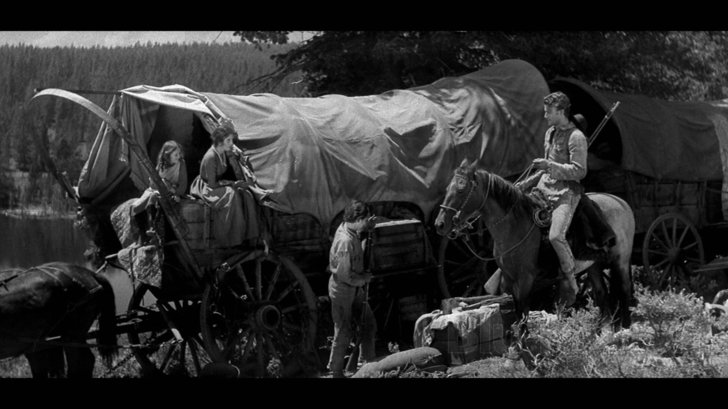
There's no point in pretending that the sound on The Big Trail is better than it is. The format is DTS-HD MA 1.0, but lossless encoding won't do much for a soundtrack that reflects the limitation of an era when, as Richard Schickel says in the commentary, no one was quite sure how talkies should be played. Post-production dubbing (what is now called "ADR") wasn't yet possible; so every actor simply bellowed their dialogue as loudly as possible to ensure he or she could be heard over whatever noise might interfere, including copious amounts of static. And that's what comes through on the track: shouted dialogue, muffled effects (because props can't bellow) and the added underscoring by a group of uncredited composers. The instruments sound thin, distant and muddy, as if one were listening to a vintage radio broadcast, which, in a sense, one is. Still, the track does its part in telling the story, and that's the only essential job of any movie soundtrack.
The Big Trail Blu-ray Movie, Special Features and Extras 

- Commentary by Film Historian/Author Richard Schickel: In addition to the expertise displayed in numerous documentaries on Hollywood and noted directors (including Scorsese, Eastwood, Vidor, Wellman, Capra and Woody Allen), Schickel also has the advantage of a long personal acquaintance with director Raoul Walsh. The commentary is laced with insight and information gleaned from their conversations about The Big Trail in particular and Walsh's directing style in general. Schickel also discusses the early phases of John Wayne's career, as opposed to the later, more familiar image of "The Duke". And he provides useful perspective on the film industry's transition to sound, which was still a work in progress when The Big Trail was made, as is immediately evident from the acting style.
- The Big Vision—The Grandeur Process (SD; 1.78:1, enhanced; 12:16): A closer look at William Fox's breakthrough 70mm widescreen process, which was twenty years ahead of its time but died almost as soon as it was born due to the prohibitive cost of refitting every theater with new equipment that could project a "grandeur" film. When Fox later re-created widescreen as Cinemascope, all that was required was a different projection lens and different matting on the screen.
- The Creation of John Wayne (SD; 1.78:1, enhanced; 13:52): A biographical sketch of Wayne's origins and entry into the film industry. The Big Trail caused him to be typecast for years, and most of the westerns he made in the immediate aftermath were forgettable. It was not until John Ford directed him in Stagecoach (1939) that Wayne began to build the resume for which we know him today. (Ford needed that much time to get over his feelings of betrayal after Wayne took a job working for Walsh, who was Ford's main rival.)
- Raoul Walsh: A Man in His Time (SD; 1.78:1, enhanced; 12:34): An overview and reappraisal of the director's career.
- The Making of The Big Trail (SD; 1.78:1, enhanced; 12:41): An overview of the film's challenging logistics, not only because of the filming process, but also due to its sheer scale.
- Galleries (DVD only):
- Production Stills: Images from the film.
- Studio Gallery: Publicity images.
- Foreign Production Stills: As noted in The Making of The Big Trail, three other versions were filmed in addition to the Academy ratio and Fox Grandeur versions. These were versions in German, Italian and Spanish, and, with an occasional exception, they used different casts because dubbing wasn't yet feasible. These photos show the replacement actors.
The Big Trail Blu-ray Movie, Overall Score and Recommendation 
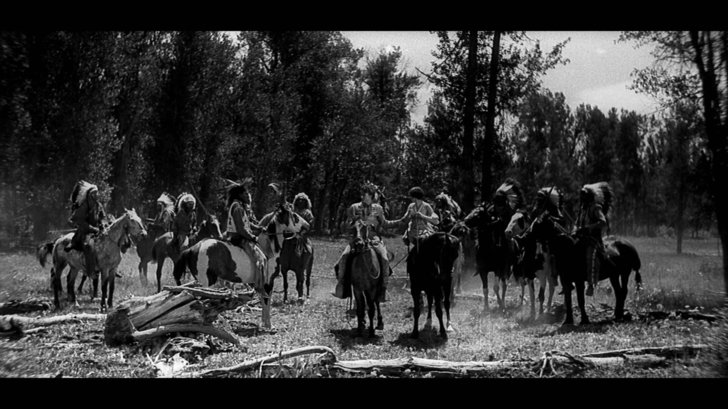
The Big Trail is a fascinating experience from multiple perspectives: as a technical milestone, as a glimpse at an art form in transition, as the experience of a major—indeed, historic— talent first revealing itself, as the opening of new possibilities for the western genre that would provide inspiration for decades of filmmaking. It also happens to be a solid entertainment, despite bits that have grown creaky with age (and some that were probably creaky when the film premiered). We can hope that some day the Grandeur version will receive a complete digital restoration, but until then this Blu-ray translation is still impressive viewing. Highly recommended.
Similar titles
Similar titles you might also like

Will Penny
1968

MacKenna's Gold
1969

The Iron Horse
Limited Edition to 3000
1924

The White Buffalo
2K Restoration
1977

Wagon Master
Warner Archive Collection
1950

Duel in the Sun
Roadshow Edition
1946

War of the Wildcats
In Old Oklahoma
1943

Rio Grande
1950

Canadian Pacific
1949

Young Billy Young
1969

Warlock
Limited Edition to 3000
1959

Two Mules for Sister Sara 4K
1970

The Train Robbers
1973

Ride the High Country
Warner Archive Collection
1962

Call of the Wild
Fox Studio Classics
1935

The Covered Wagon
1923

Pale Rider 4K
1985

California
1947

Alias Jesse James
1959

Bend of the River
1952